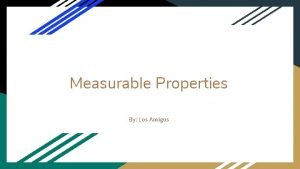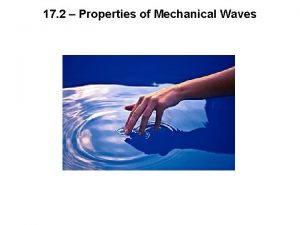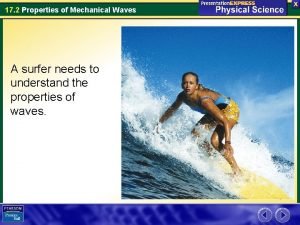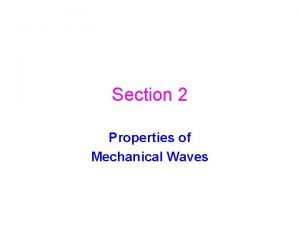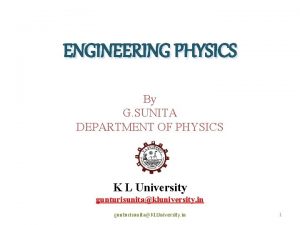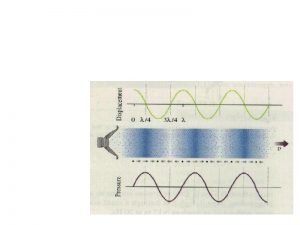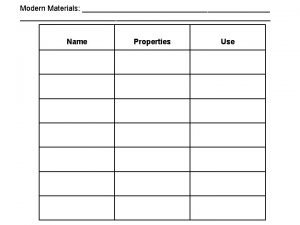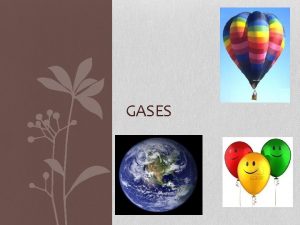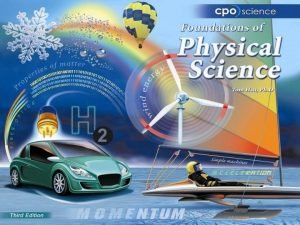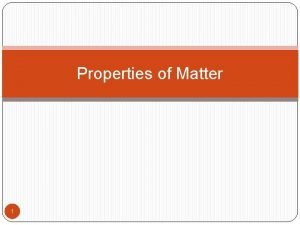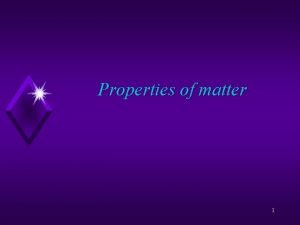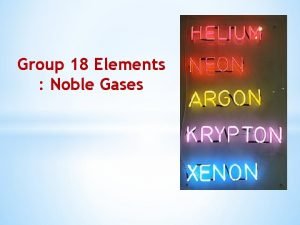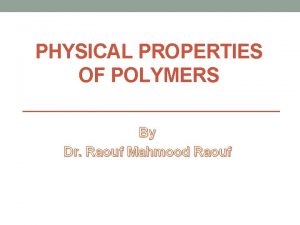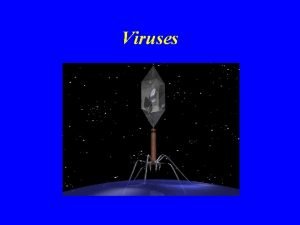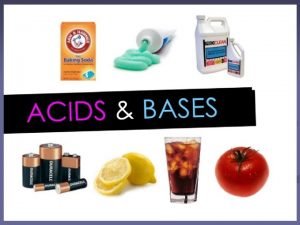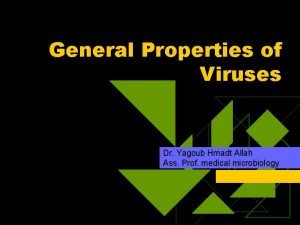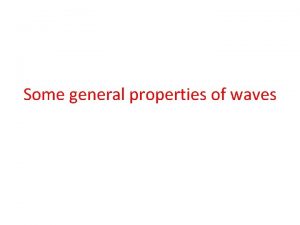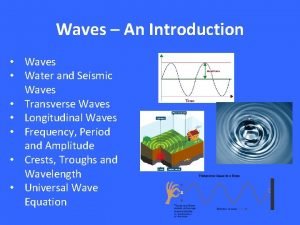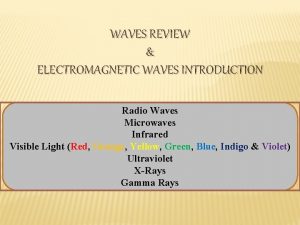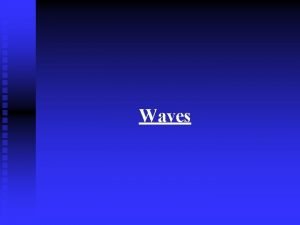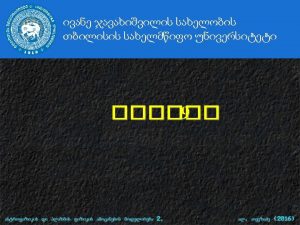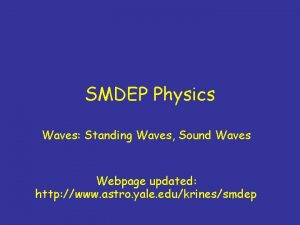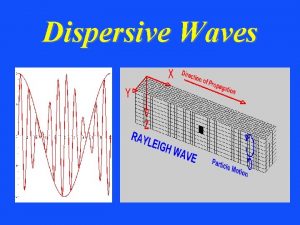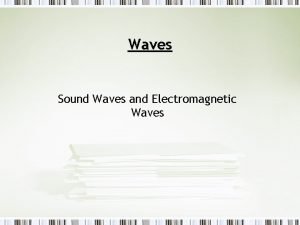GENERAL PROPERTIES OF WAVES INTRODUCTION TO WAVES Mr




































- Slides: 36

GENERAL PROPERTIES OF WAVES INTRODUCTION TO WAVES Mr Elijah Ong 1

Tsunami Mr Elijah Ong 2

Uses of waves l What are some examples or applications of waves in everyday life? l Hydropower l Guitar/piano, in fact all musical instruments l The above are mechanical waves l Some electromagnetic waves includes light, radio waves, x-rays Mr Elijah Ong 3

Kallang Waves! Mr Elijah Ong 4

What is a wave? l Spreading of disturbance from one place to another. l The source is a vibration or oscillation. l Energy is transferred from one point to another WITHOUT physical transfer of any material between the two points Mr Elijah Ong 5

Demo WAVES Slinky or ropes l Transverse waves l http: //www. ngsir. netfirms. com/englishhtm/Tw ave. A. htm l Mr Elijah Ong 6

Transverse Waves l Transverse waves travel in a direction PERPENDICULAR to the direction of the vibrations. Mr Elijah Ong 7

Mr Elijah Ong 8

Transverse Waves Some Examples: water waves l rope waves l electromagnetic waves (example: light) l Mr Elijah Ong 9

The Slinky Coil What do you notice about the direction of the vibrations and the direction of the wave? Mr Elijah Ong 10

The other type of wave called… … Longitudinal Wave… l What is a longitudinal wave? l A wave where the direction of travel is parallel to the direction of vibration. Mr Elijah Ong 11

How does it look like? l Demonstration of a longitudinal wave? l l Slinky Coil On an Applet l Mr Elijah Ong 12

Longitudinal Waves l Compression l l Places where air pressure is slightly higher than the surrounding air pressure. Rarefaction l Places where air pressure is slightly lower than the surrounding air pressure. Mr Elijah Ong 13

Longitudinal Waves l Examples - Sound waves Mr Elijah Ong 14

LONGITUDINAL WAVES Longitudinal waves travel in a direction PARALLEL to the direction of vibrations. l We use compressions and rarefactions to describe them l Compression Rarefactions Compression Mr Elijah Ong 15

Demo on applet l http: //www. ngsir. netfirms. com/englishht m/Lwave. htm Mr Elijah Ong 16

Example Q. A sound wave in air has a frequency of 262 Hz and travels with a speed of 343 m/s. How far apart are the wave compressions? A. Given f = 262 Hz and v = 343 m/s, Distance between wave compression = wavelength = v / f = 1. 3 m (1 dp) Mr Elijah Ong 17

Wavefront l That is a… wavefront - an imaginary line on a wave that joins all points which have the same phase of vibration. Mr Elijah Ong 18

Crests and Troughs Crests: points of maximum displacement on a wave l Troughs: points of minimum displacement on a wave l displacement CREST Distance along rope TROUGH Mr Elijah Ong 19

AMPLITUDE (A) Maximum Displacement from the rest or central position. l SI unit metre (m) l displacement crest amplitude distance along rope amplitude trough Mr Elijah Ong 20

Wavelength (λ) l The distance between two successive points of the same phase. Example: distance between two crests. SI unit: metre (m). displacement Wavelength crest λ crest amplitude position along rope amplitude trough Mr Elijah Ong 21

Frequency (f) l Number of complete waves generated per second (or number of cycles/oscillations per second) l SI unit: hertz (Hz) l E. g: 5 Hz mean 5 waves generated in 1 s Mr Elijah Ong 22

Period (T) l Time taken to generate one complete wave (or to complete one cycle) l SI unit: second (s) l E. g. l 5 Hz mean 5 waves generated in 1 s l 1 wave is generated in 1/5 = 0. 25 s l Therefore, Period (T) = 0. 25 s Mr Elijah Ong 23

Relationship between T and f As f increases, T decreases Mr Elijah Ong 24

How fast is the wave moving? Mr Elijah Ong 25

Find the velocity of waves Velocity of wave is the product of its frequency and wavelength Mr Elijah Ong 26

Example Q. A fisherman notices that wave crests pass the bow of his anchored boat every 3. 0 s. He measures the distance between two successive crests to be 6. 5 m. How fast are the waves travelling? A. From the question, we know the period, T = 3. 0 s, and the wavelength is 6. 5 m. Therefore, wave speed, v = 6. 5 / 3 = 2. 2 ms-1 (1 dp) Mr Elijah Ong 27

Using the 2 formulas, can you combine them and formed a third equation? Third equation: Mr Elijah Ong 28

2 types of graphs to note! 1. The displacement-position graph • Able to find wavelength • Amplitude 2. The displacement-graph • Period • Amplitude Mr Elijah Ong 29

Displacement-time graph l Distance between two crests denotes the period in a displacement-time graph. ( Contrast this with the displacement-position graph! What is the difference? ) displacement Period crest T crest amplitude time amplitude trough Mr Elijah Ong 30

Displacement-time and displacement-position graphs Displacement-time graph: Shows the displacement of ONE particle (from the rest position) at different times. Displacement-position graph: Shows the displacement of ALL particles time. at a certain time Mr Elijah Ong 31

Try this l Textbook page 177 Mr Elijah Ong 32

Question Particles in the medium vibrate when the wave passes by. In which direction does the particle move? motion of wave ? wave at this moment ? Mr Elijah Ong wave at next moment 33

Question In which direction does particle a move? motion of wave ? wave at this moment ? wave at next moment Downwards. To the right. Other: _______ Mr Elijah Ong 34

Vibration vs Waves l Vibrations simply refers to one single particle vibrating at its mean position l Waves refer to the all the particles’ vibrations with respect to time l They are essentially different! Don’t mix these two terms up. Mr Elijah Ong 35

SUMMARY Mr Elijah Ong 36
 Mechanical waves examples
Mechanical waves examples Transverse wave vs longitudinal wave
Transverse wave vs longitudinal wave Mechanical wave
Mechanical wave Difference between electromagnetic waves and sound waves
Difference between electromagnetic waves and sound waves Characteristics of a longitudinal wave
Characteristics of a longitudinal wave Is echolocation transverse or longitudinal
Is echolocation transverse or longitudinal Long waves and short waves
Long waves and short waves Mechanical waves and electromagnetic waves similarities
Mechanical waves and electromagnetic waves similarities Electromagnetic waves vs mechanical waves
Electromagnetic waves vs mechanical waves Mechanical waves and electromagnetic waves similarities
Mechanical waves and electromagnetic waves similarities Surface waves and body waves
Surface waves and body waves Is a seismic wave mechanical or electromagnetic
Is a seismic wave mechanical or electromagnetic Compare and contrast p waves and s waves using venn diagram
Compare and contrast p waves and s waves using venn diagram What do all waves transmit
What do all waves transmit Aimtoknow
Aimtoknow How do matter and energy interact when waves are generated
How do matter and energy interact when waves are generated The basic properties of waves are
The basic properties of waves are Detail the measurable properties for all waves.
Detail the measurable properties for all waves. Property of mechanical waves
Property of mechanical waves Properties of mechanical waves
Properties of mechanical waves Properties of mechanical waves
Properties of mechanical waves Magnetostriction oscillator
Magnetostriction oscillator 4 basic properties of waves
4 basic properties of waves What is wave motion
What is wave motion Extensive vs intensive quantity
Extensive vs intensive quantity Chemical property of water
Chemical property of water Properties of smart and modern materials
Properties of smart and modern materials General properties of gases
General properties of gases Strength property of matter
Strength property of matter General properties of matter
General properties of matter General property of matter?
General property of matter? Noble gas properties
Noble gas properties General properties of aqueous solutions
General properties of aqueous solutions Typical properties of polymers
Typical properties of polymers General properties of viruses
General properties of viruses Acid and bases properties
Acid and bases properties Ribovirus dan deoxyribovirus
Ribovirus dan deoxyribovirus

















